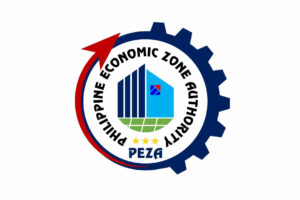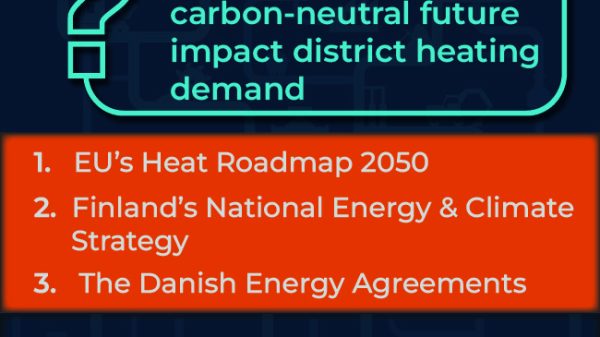With a higher focus on sustainable living in modern architecture, the building automation systems (BAS) industry stands as a beacon of innovation. These systems can reshape the way we design and manage spaces to deliver smart, energy-efficient, and user-friendly solutions. Integrating various technologies to automate and control essential building functions creates an ecosystem that provides improved sustainability and occupant comfort.
At the heart of BAS lies a web of interconnected components that work seamlessly to optimize building operations. These components include sensors, controllers, actuators, and communication devices, collectively enabling functions to control lighting, HVAC components, security & access, energy management, among other systems.
A report published by Global Market Insights, Inc. predicts the building automations systems market value to exceed US$600 billion by 2032, attributed to various industrial and consumer behavior trends.
Key Market Trends and Drivers
The demand for building control and automation system components across the world is surging due to several factors.
Need for Better Energy Efficiency: As organizations and individuals prioritize sustainability, there is a growing demand for BAS to enhance energy efficiency and reduce carbon footprints. It is particularly evident in sectors such as commercial buildings, healthcare facilities, and educational institutions. According to California Building Standards Code signed in the year 2022, newly constructed commercial buildings should be carbon neutral by 2030 and existing buildings must be retrofitted to meet the target by 2045.
Construction of large residential complexes: Rapid population surge, urbanization, higher disposable incomes, government initiatives to boost utility infrastructure, and economic trends have fueled investments in large residential complexes across APAC. It will lead to a considerable demand for building management systems to offer highest levels of convenience to consumers.
For instance, the Cyberjaya City Center being developed in Malaysia, which could spread over approx. 53 hectares, will consist of smart homes and offices, where residents can enjoy several building automation components, including management of apartments through a mobile app.
Integration of IoT and Artificial Intelligence:
The integration of the Internet of Things (IoT) and Artificial Intelligence (AI) is propelling BAS to new heights. IoT devices and sensors collect real-time data, while AI algorithms analyze this data to optimize building operations dynamically.
OpenBlue offered by Johnson Controls is an example of an ecosystem featuring AI-driven predictive maintenance and energy optimization capabilities, while also allowing personalization of commercial spaces for employee comfort and enhanced security.
Development of Smart Cities:
The global shift towards smart city initiatives is a significant driver for the BAS market. Governments and urban planners are leveraging building automation to create intelligent, interconnected urban spaces that prioritize resource efficiency and quality of life.
In Brazil, the “Smart Rio” initiative in Rio De Janeiro aims at strengthening public safety, improve traffic flow and more towards environmental sustainability via solutions such as smart lighting and real-time monitoring of infrastructure.
IoT-powered building management systems and HVAC – the Unmatched Synergy
As smart buildings become increasingly prevalent, building control systems and IoT-enabled devices will play a pivotal role in shaping the future of the building design. The synergy between BAS and IoT is ushering in a new era of intelligent and sustainable living.
Application in Commercial Buildings – An integral component of building automation systems is the Building Management System (BMS) for HVAC. This system integrates various HVAC components into a centralized management platform, allowing building managers to monitor and control HVAC operations efficiently. These solutions are becoming essential in buildings such as retail malls, office complexes and government buildings.
The BMS collects data from sensors throughout the HVAC system, analyzing it to identify patterns and anomalies for proactive maintenance and energy optimization. It can automatically adjust heating and cooling based on factors such as occupancy patterns and outdoor weather conditions, ensuring optimal comfort while minimizing energy consumption.
In September 2023, Singapore’s Nex shopping center had announced a partnership with IoT service provider UnaBiz to implement indoor air quality monitoring for ensuring good air quality and optimizing energy consumption. By utilizing IoT devices and sensors, the initiative aimed to enhance the overall shopping experience for visitors by providing a healthier environment.
This collaboration exemplifies the increasing integration of IoT solutions to address environmental concerns and improve operational efficiency in commercial spaces. As of December 2023, there were more than 18,000 shopping malls in Asia alone, representing the significant opportunities in the region for smart building control system providers.
IoT’s Role in Home Automation – By integrating IoT devices with building control systems, homeowners can control and automate various aspects of their homes remotely. For example, an IoT-enabled smart thermostat can analyze weather data, occupancy patterns, and user preferences to optimize heating and cooling, and even learn from user behavior to adapt settings automatically. The Wiser Air Hybrid thermostat solution launched by Schneider Electric in 2022 for residential spaces to help manage temperature in different rooms while providing connectivity with other smart devices.
Several connected components like lighting control systems, home security systems, and intelligent appliances communicate with each other, allowing homeowners to remotely adjust settings, monitor energy consumption, receive alerts, and much more.
Government support for the adoption of building management systems, primarily as a tool to combat energy consumption, will also be essential in augmenting IoT integration in homes.
For example, the Canada Green Homes Grant was introduced in 2020 to offer financial assistance to homeowners for investments in energy-efficient home improvement including smart lighting systems, smart thermostats, and other elements. Similar initiatives were observed in European nations such as France, Germany, Sweden, among others, which indicate strong markets for BAS solutions.
Rising Importance of BAS for Security & Access Control Solutions
Building automation systems play a pivotal role in ensuring security and access control within commercial and residential structures. One notable application is the deployment of smart card access systems. This technology not only restricts unauthorized access but also enables seamless tracking of personnel movement within a building, contributing to enhanced security protocols.
According to Global Market Insights, the security & access control segment held over 30% share of the BAS market during 2023, with increasing focus of businesses toward countering physical and cyber threats.
Biometric access control is a cutting-edge technology integrated into building control systems. Biometric solutions, such as fingerprint or retina scanning, offer a highly secure means of authentication in environments where precision and reliability are paramount. For instance, government facilities, research laboratories, and financial institutions widely deploy biometric access control within their building management systems to fortify their security measures.
Bolstering Data center security –
Another factor which could offer substantial growth prospects for developers of building security and access control system is the rise in demand for data centers. In data center facilities, unauthorized access to sensitive data can have devastating consequences for businesses, financial institutions, and even national security. Protecting critical hardware and infrastructure from physical damage, theft, or tampering is paramount.
Access control systems with intrusion detection and logging capabilities prevent unauthorized individuals from entering restricted areas and alert security personnel to potential threats. It is estimated that there were more than 10,900 data center locations worldwide as of 2023, with continuous increase in the deployment of cloud-based platforms and the tremendous penetration of mobile internet across developing countries.
Over the coming years, the need for upgrading the security systems at these facilities and construction of new data centers will generate significant need for suitable building management systems. Apart from access control, BAS are crucial for climate and energy management in data centers. In terms of the application, BAS can monitor and manage UPS operations to ensure continued power, allow remote monitoring and analysis of energy consumption, temperature and other parameters.
With heavy deployment of online services and 5G networks, we can expect considerable expansion of data center facilities in emerging economies. For instance, the data center capacity in India is anticipated to surpass 1,300 MW during 2024, a gradual increase from approx. 880 MW recorded at the end of June 2023. Edge computing requirements for implementation of 5G technologies across industrial and consumer applications will ensure remarkable growth platform for the industry.
Looking ahead, the building automation systems market is poised for continuous evolution, driven by increasing awareness of sustainability, and the ongoing development of smart cities. The integration of 5G connectivity, edge computing, and advanced analytics will further enhance the capabilities of BAS, creating more responsive and intelligent building environments. As the market continues to thrive, it opens doors to a future where every building is a smart, interconnected hub that prioritizes efficiency, comfort, and sustainability. The journey towards intelligent buildings has just begun, and building automation systems are at the forefront.
























